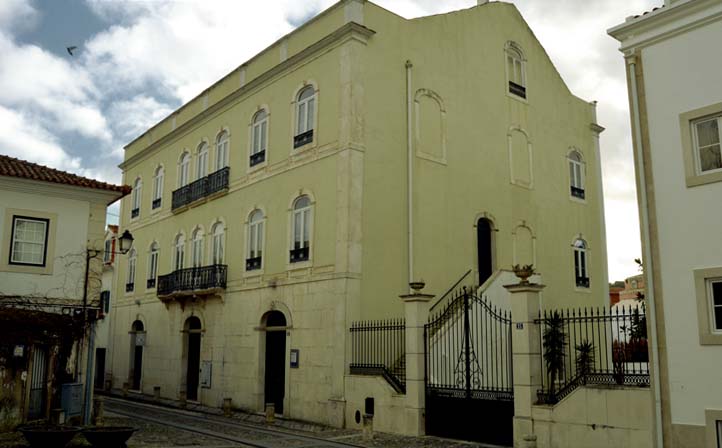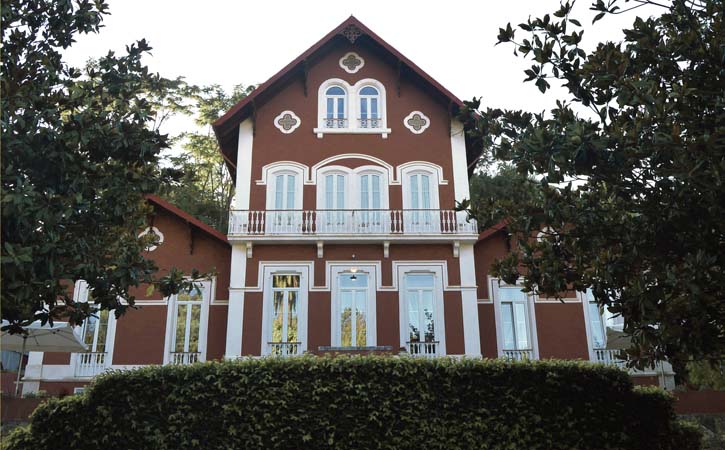All About the Alcobaça Chalets and Palaces
Welcome to our post about the amazing Alcobaça Chalets and Palaces. A romantinc route throught the city.
Pena Palace
Built in the 90’s of the 19th century, the decoration of Pena Palace in Alcobaça has Brazilian influences in its decoration, like other palaces and chalets in the municipality, which together are called “Casas dos Brasileiros”.
When immigrating to Brazil, where he made his fortune, Francisco do Pena later returned to Portugal and built the Palace with influences on taste brought from his time in Brazil.
Francisco Pena’s marriage to D. Maria Nazaré Rio did not generate descendants, which motivated that after the death of the owner the Palace and its surrounding property had been sold to the City Council of Alcobaça, and the building has since been home the Town Halls of Alcobaça.
See more+
Palacete Bernardino Lopes de Oliveira Palace
The Bernardino Lopes de Oliveira Palace in Alcobaça is a 19th century house owned by Bernardino Lopes de Oliveira.
This illustrious Alcobacense, who became Mayor of Alcobaça, emigrated, following the example of many other Portuguese to Brazil in search of better living conditions.
Having made a fortune there, he later returned to Portugal, contributing decisively to the development of his homeland.
It was precisely in the context of his return to Alcobaça that he built the Bernardino Lopes de Oliveira Palace, a bourgeois type building, in a romantic style, following the example of many other chalets and palaces built at the end of the 19th century in the city.
In the life of Bernardino Lopes de Oliveira the building functioned as a Consulate of Brazil in Alcobaça and on the ground floor there also functioned a personal Zoological Museum, constituted from the collection of birds of Brazilian and Portuguese fauna, and a collection of friars in clay of Porto production. Currently, it works as Housing Tourism.
See more+
Fonte Nova
Included in Quinta da Fonte Nova, belonging to the Alcobaça Monastery, Chalet Fonte Nova was built in 1877.
Owned by the industrialist António Cândido da Encarnação, this chalet is yet another building of bourgeois taste that you can contemplate in the municipality of Alcobaça.
In 1886, the chalet received, between 13 March and 6 April, Infante D. Augusto, son of D. Maria II and D. Fernando II.
The reception to Infante D. Augusto, a member of the national Royal Family, and his stay there, gives the place a status that is not available to any building and is an example of the nobility of the building and its owners.
Used as a family residence for several generations, in 1993 the Chalet underwent conservation and restoration works and started to be explored as a place for tourist accommodation.
Located near the Monastery, an indispensable place to visit in the city, deserves a close look for its grandeur and exterior decoration.
See more+
Rino Chalet
Owned by farmer and owner José Pereira da Silva Rino, Chalet Rino in Alcobça is another excellent example of romantic residential architecture in the city.
Built on the old grounds of the fence of the Monastery of Alcobaça, next to the bank of the river Alcôa, the Chalet was built between the years of 1891 and 1892, standing out for the blue color of its facade.
The romantic style gives it prominence for its grandeur and the external decoration, which when combined with the surrounding vegetation, makes it impossible for anyone who passes by not to notice this beautiful building.
Until 1970, Chalet Rino was owned by the Rino family, when José Rino’s daughter donated the building to the Religious Congregation of S. José de Cluny, who later sold the building’s contents.
Recently was adapted to the children’s Wellness Center, a use that they still maintain, safeguarding the maintenance of the building.




